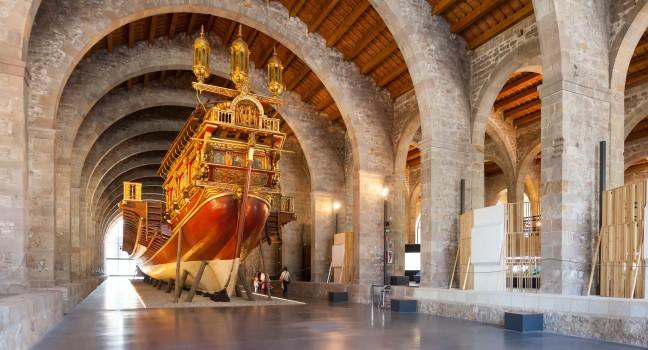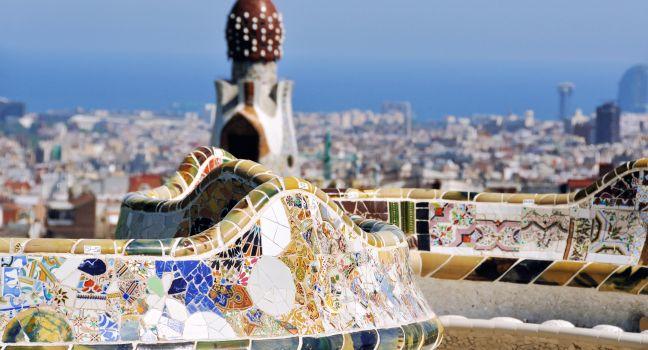Casa Batlló
Gaudí at his most spectacular, the Casa Batlló is actually a makeover: it was originally built in 1877 by one of Gaudí's teachers, Emili Sala Cortés, and acquired by the Batlló family in 1900. Batlló wanted to tear down the undistinguished Sala building and start over, but Gaudí persuaded him to remodel the facade and the interior, and the result is astonishing. The facade—with its rainbow of colored glass and trencadís (polychromatic tile fragments) and the toothy masks of the wrought-iron balconies projecting outward toward the street—is an irresistible photo op. Nationalist symbolism is at work here: the scaly roof line represents the Dragon of Evil impaled on St. George's cross, and the skulls and bones on the balconies are the dragon's victims, allusions to medieval Catalonia's code of chivalry and religious piety. Gaudí is said to have directed the composition of the facade from the middle of Passeig de Gràcia, calling instructions to workmen on the scaffolding. Inside, the translucent windows on the landings of the central staircase light up the maritime motif and the details of the building; as everywhere in his oeuvre, Gaudí opted for natural shapes and rejected straight lines.
A visit to Casa Batlló is more than a traditional tour of a museum or monument. The fully restored house is packed with state-of-the-art technologies, including immersive rooms, surprising audiovisual productions, and an intelligent audio guide available in 15 languages. Children especially will enjoy an Augmented Reality SmartGuide: a fun, interactive way to discover the genius of Gaudí. From May to October, finish your visit with an open-air concert on the roof (starts at 8 pm) and a drink, as part of the "Magic Nights" program.
Budget-conscious visitors take note: The admission fee is rather high but there are discounts for booking in advance online; you can also just take in the view from outside the Casa Batlló and instead visit the Casa Milà, up the Passeig de Gràcia on the opposite side.






